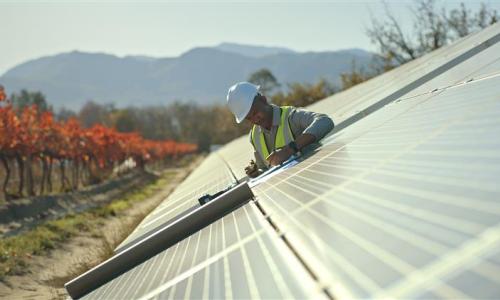Can America develop a balanced portfolio of clean energy solutions that will stop wasting energy and also develop diverse, domestic energy supplies to increase energy security?
Can America develop an energy system that will save consumers money, provide security and jobs, and leave a heritage of clean air, clean water, and pristine wilderness?
Can the United States restore international good will and credibility by reducing carbon dioxide emissions that threaten to destabilize the global climate?
This report demonstrates that the answer to those questions is "Yes." Energy efficiency and renewable energy technologies are ready to serve us. What we need now is vision, leadership, and determination to provide a clean, affordable energy future.
The Union of Concerned Scientists, with assistance from American Council for an Energy-Efficient Economy and Tellus Institute, investigated the costs and benefits of a Clean Energy Blueprint to promote diversity in production and energy conservation. We also examine a subset of Clean Energy Blueprint policies included in the Renewable Energy and Energy Efficiency Investment Act of 2001 (S. 1333). We compare our figures with the business-as-usual forecast of the US Energy Information Administration. That forecast underlies the administration's National Energy Policy call to develop 1,300 new power plants by 2020.
We find that the United States can:
- meet at least 20 percent of its electricity needs by renewable energy sources-wind, biomass, geothermal, and solar-by 2020.
- save consumers a total of $440 billion by 2020, with annual savings reaching $105 billion per year or $350 per typical family.
- reduce our use of natural gas by 31 percent and coal by nearly 60 percent compared to business-as-usual by 2020, and save more oil in 18 years than can be economically recovered from the Arctic National Wildlife Refuge in 60 years.
- avoid the need for 975 new power plants ( 300 megawatts each), retire 180 old coal plants (500 MW each), retire 14 existing nuclear plants (1000 MW each), and reduce the need for hundreds of thousands of miles of new gas pipelines and electricity transmission lines.
- reduce carbon dioxide emissions by two-thirds from business-as-usual by 2020, while also reducing harmful air emissions of sulfur dioxide and nitrogen oxides by 55 percent.
Implementing a subset of the Blueprint policies included in the Renewable Energy and Energy Efficiency Investment Act of 2001 (S. 1333) would save consumers over $70 billion and reduce carbon dioxide emissions from power plants by nearly one third over the next 20 years. With 20 percent higher natural gas prices, consumers would save an additional $60 billion under either the Clean Energy Blueprint or S. 1333



